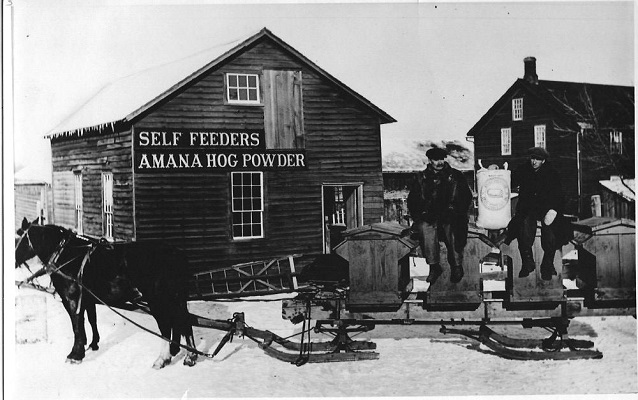Last updated: December 18, 2017
Place
Powder House

Photo courtesy of Amana Heritage Society
Built in 1870, the Powder House was once a part of the pharmacy complex that included the two buildings to the south. It takes its name from a product produced there by William Miller, village pharmacist. In 1908, Miller developed a recipe for hog powder, a livestock cure-all feed additive. Although his vocation was producing cures for people, it wasn’t surprising that his skills were used for livestock in an agricultural community. The powder was widely used by the Amana Society farm department and area farmers.
By 1890 three physicians served the Colonies: Dr. Winzenried, of Amana, a graduate of Rush Medical College; Dr. Herrmann of Middle Amana, a graduate of the State University of Iowa’s Medical Department (1881); and Dr. Mörschell of Homestead, also from the State University of Iowa (1888). During the same era, Conrad Schadt, a well-known chemist, lived in the Amana Colonies. He produced pepsin, which helps in the digestive breakdown of protein to peptides. Pepsin, found in the stomach of hogs, is used as a digestive aid. Mr. Schadt was reportedly the first man west of Chicago to begin the manufacture of this item, and was, according to William Perkins, "considered the best in the market."
